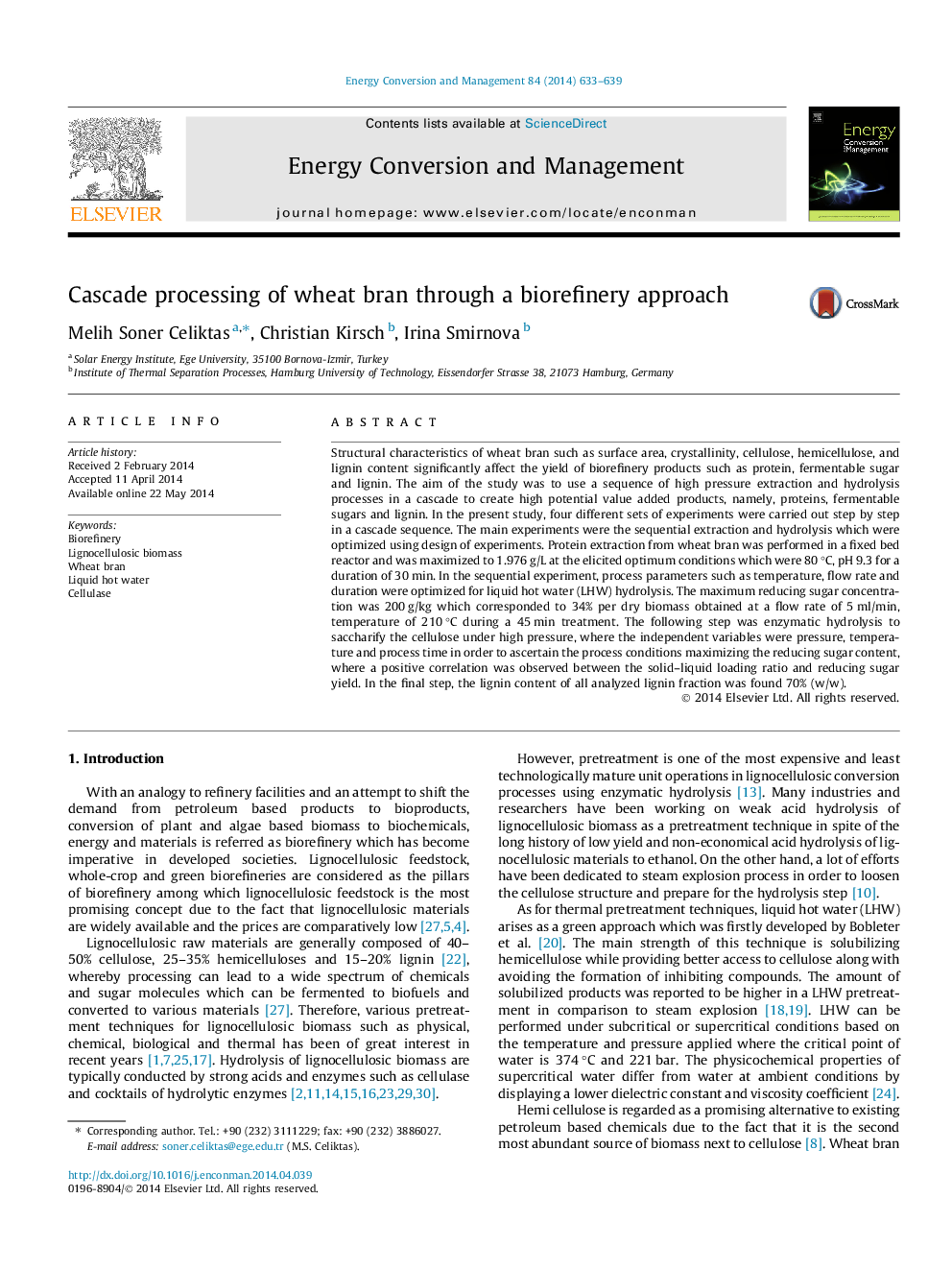| کد مقاله | کد نشریه | سال انتشار | مقاله انگلیسی | نسخه تمام متن |
|---|---|---|---|---|
| 763827 | 1462878 | 2014 | 7 صفحه PDF | دانلود رایگان |
• About 98% of total sugars were successfully converted and recovered from wheat bran.
• LHW & effective enzyme-assisted extraction method is used to obtain total sugar.
• Sequential treatment of various materials can be a great value to the industry.
• High pressure & LHW can be a valuable treatment for the lignocellulosic materials.
• Protein separation can be done with LHW.
Structural characteristics of wheat bran such as surface area, crystallinity, cellulose, hemicellulose, and lignin content significantly affect the yield of biorefinery products such as protein, fermentable sugar and lignin. The aim of the study was to use a sequence of high pressure extraction and hydrolysis processes in a cascade to create high potential value added products, namely, proteins, fermentable sugars and lignin. In the present study, four different sets of experiments were carried out step by step in a cascade sequence. The main experiments were the sequential extraction and hydrolysis which were optimized using design of experiments. Protein extraction from wheat bran was performed in a fixed bed reactor and was maximized to 1.976 g/L at the elicited optimum conditions which were 80 °C, pH 9.3 for a duration of 30 min. In the sequential experiment, process parameters such as temperature, flow rate and duration were optimized for liquid hot water (LHW) hydrolysis. The maximum reducing sugar concentration was 200 g/kg which corresponded to 34% per dry biomass obtained at a flow rate of 5 ml/min, temperature of 210 °C during a 45 min treatment. The following step was enzymatic hydrolysis to saccharify the cellulose under high pressure, where the independent variables were pressure, temperature and process time in order to ascertain the process conditions maximizing the reducing sugar content, where a positive correlation was observed between the solid–liquid loading ratio and reducing sugar yield. In the final step, the lignin content of all analyzed lignin fraction was found 70% (w/w).
Figure optionsDownload as PowerPoint slide
Journal: Energy Conversion and Management - Volume 84, August 2014, Pages 633–639
